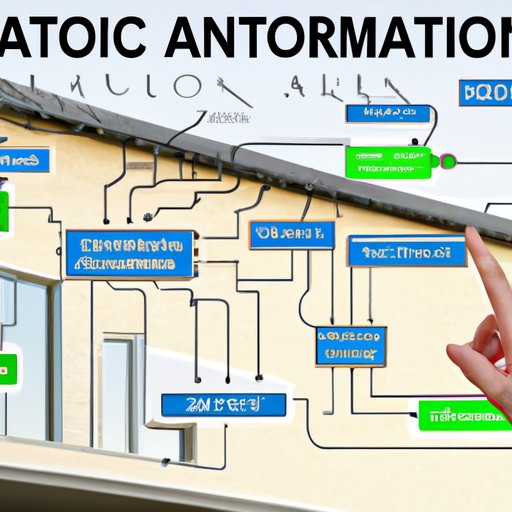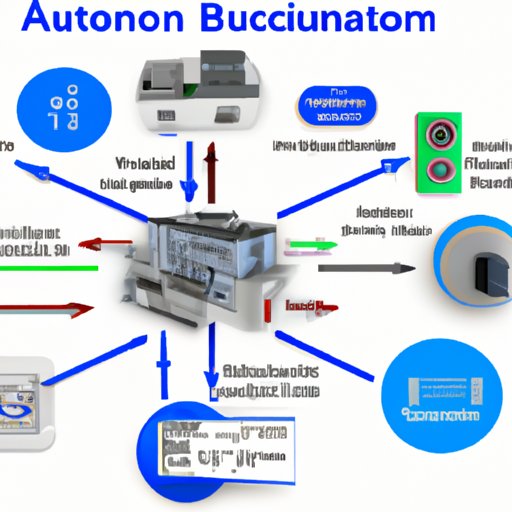Introduction
Building automation systems (BAS) are rapidly becoming an essential part of modern living. These systems are used to control various aspects of a building’s functions, from heating, ventilation, and air conditioning (HVAC) to lighting, security, and energy management. In this article, we will explore what building automation systems are, their components, and the benefits of using them in the home.

Exploring Building Automation Systems: A Comprehensive Overview
A building automation system, or BAS, is a computer-based system that monitors, controls, and optimizes the performance of a building’s mechanical and electrical systems. These systems can be used to regulate temperature, humidity, lighting, and other environmental variables. They can also be used to monitor safety and security systems, as well as energy consumption.
The components of a building automation system include sensors, actuators, controllers, and communication networks. Sensors detect changes in the environment and send signals to the controller. The controller then interprets the signals and sends commands to the actuators, which carry out the desired action. Communication networks provide a link between the components, allowing them to communicate with each other and with external systems.
The benefits of building automation systems include increased energy efficiency, cost savings, improved comfort and convenience, and enhanced safety and security. By automating processes such as temperature control, lighting, and security, these systems can help reduce energy consumption and operational costs. They can also provide greater comfort by automatically adjusting settings according to user preferences. Finally, building automation systems can improve safety and security by providing real-time monitoring and alerts.
Benefits of Using Building Automation Systems in the Modern Home
Using building automation systems in the home can have numerous benefits. Here are some of the key benefits of using building automation systems in the modern home:
Cost Savings
One of the most significant benefits of using building automation systems in the home is cost savings. By automating processes such as temperature control, lighting, and security, these systems can help reduce energy consumption and operational costs. This can lead to significant savings over time.
Increased Comfort and Convenience
Building automation systems can also provide greater comfort and convenience by automatically adjusting settings according to user preferences. For example, a user can set the system to turn on the lights when they enter a room, or to adjust the temperature based on the time of day.
Improved Energy Efficiency
Another benefit of building automation systems is improved energy efficiency. By automating processes such as temperature control, lighting, and security, these systems can help reduce energy consumption and operational costs. This can lead to significant savings over time.
Safety and Security
Building automation systems can also improve safety and security by providing real-time monitoring and alerts. For example, a system can alert users if there is a potential fire hazard or if someone has accessed the home without permission.
How to Create a Smarter Home with Building Automation Systems
Creating a smarter home with building automation systems is not as difficult as it may seem. Here are some tips for creating a smarter home with building automation systems:
Choosing the Right Automation System
The first step in creating a smarter home with building automation systems is to choose the right system. Consider the size of your home, the types of features you want, and the budget you have available. It is also important to consider the compatibility of the system with other devices and systems in your home.
Setting Up the System
Once you have chosen the right system, the next step is to set up the system. This typically involves connecting the system to a power source and configuring the settings according to your preferences.
Integrating Sensors
The next step is to integrate sensors into the system. Sensors can be used to monitor the environment, detect changes, and trigger automatic responses. For example, a motion sensor can be used to turn on the lights when someone enters a room.
Programming the System
Finally, the system must be programmed to respond to the sensors. This typically involves setting up rules and conditions for the automated responses. For example, a rule might be set up to turn off the lights when no one is in the room for a certain period of time.

An Introduction to Building Automation Systems and Their Uses
Building automation systems can be used in a variety of applications. Here are some of the most common uses for building automation systems:
Types of Automation Systems
There are several types of automation systems available, including HVAC systems, lighting systems, security systems, and energy management systems. Each type of system has its own unique features and capabilities.
Use Cases for Building Automation Systems
Building automation systems can be used in many different scenarios. Some examples include controlling temperature and humidity levels in a home, managing energy consumption, and providing real-time monitoring and alerts for safety and security purposes.

Understanding the Basics of Building Automation Systems and Their Advantages
Building automation systems can provide numerous advantages in terms of energy efficiency and cost savings. Here are some of the basics of building automation systems and the advantages they can provide:
Automation Technology
Building automation systems use advanced automation technology to monitor, control, and optimize the performance of a building’s mechanical and electrical systems. This technology includes sensors, actuators, controllers, and communication networks.
Advantages of Building Automation Systems
The advantages of building automation systems include increased energy efficiency, cost savings, improved comfort and convenience, and enhanced safety and security. By automating processes such as temperature control, lighting, and security, these systems can help reduce energy consumption and operational costs.
Conclusion
Building automation systems are a great way to make homes smarter and more efficient. These systems can help reduce energy consumption and operational costs, while providing greater comfort and convenience. Additionally, they can improve safety and security by providing real-time monitoring and alerts. If you are looking to make your home smarter, building automation systems are a great option.
(Note: Is this article not meeting your expectations? Do you have knowledge or insights to share? Unlock new opportunities and expand your reach by joining our authors team. Click Registration to join us and share your expertise with our readers.)
